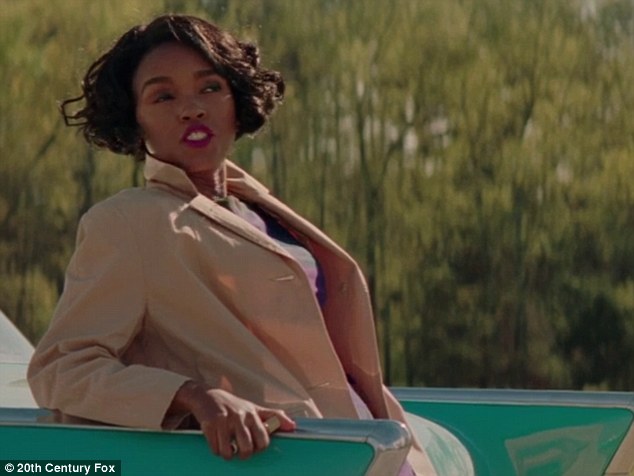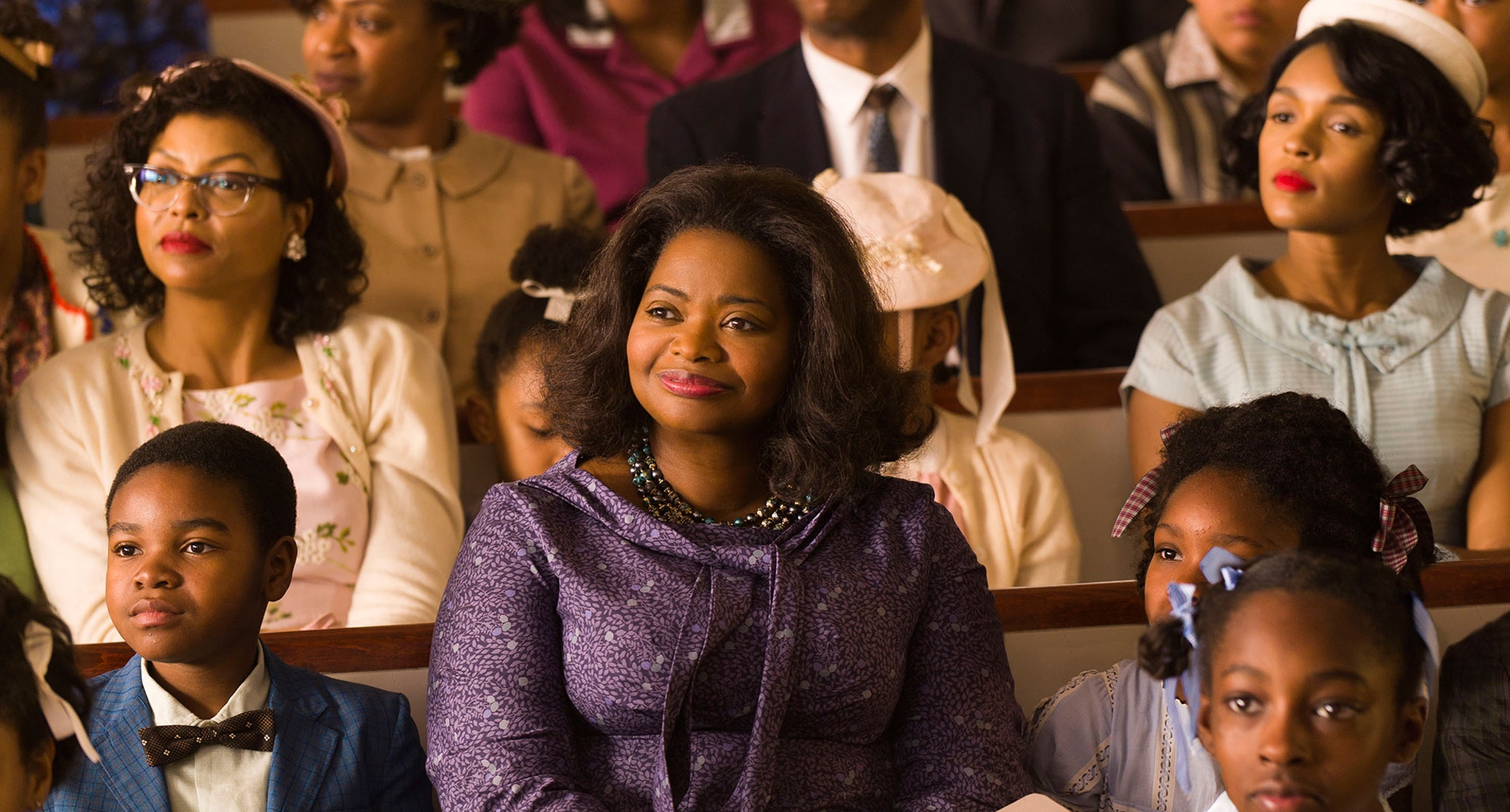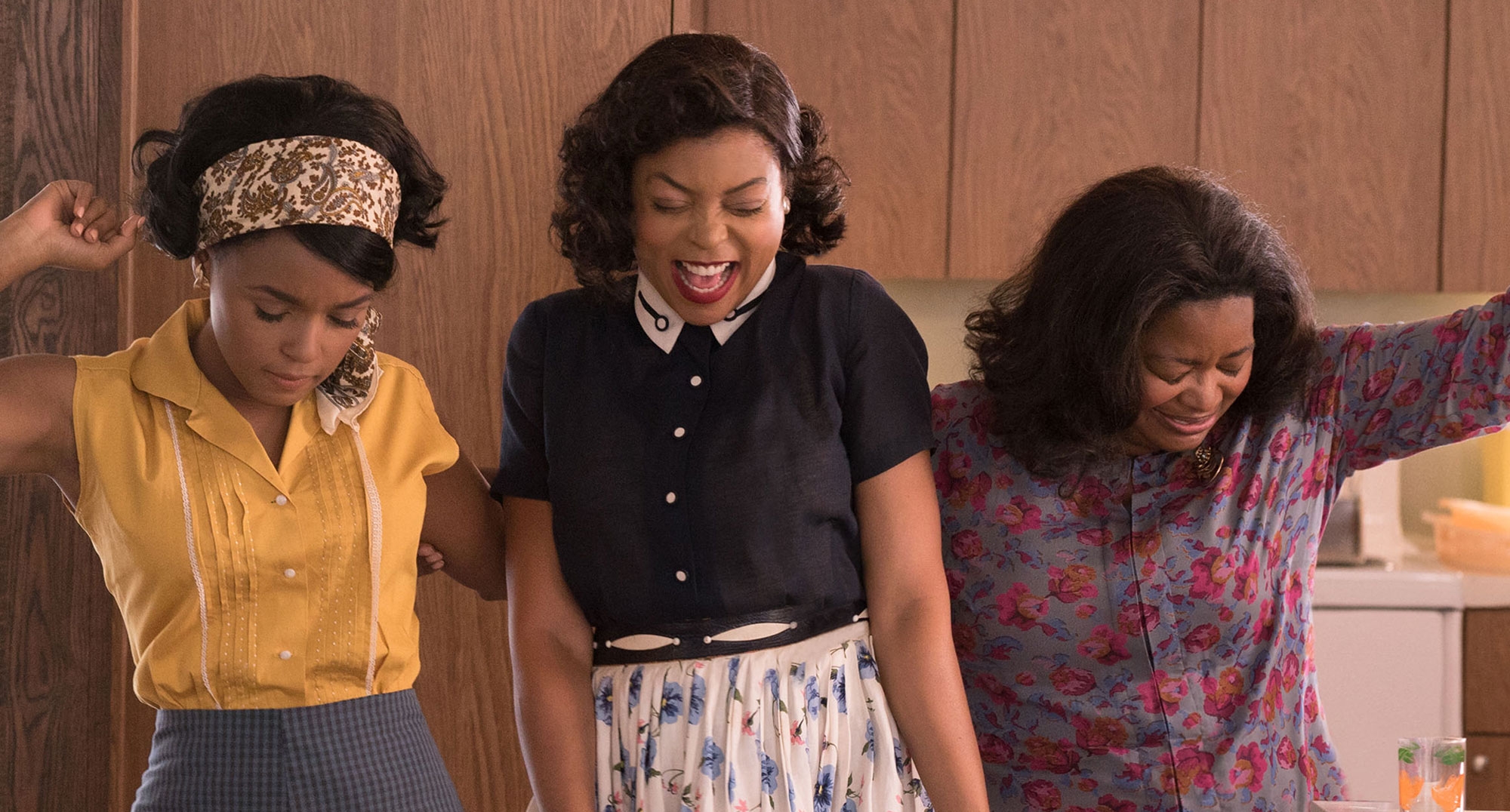The 1960s is an era remembered for the civil rights movement, fighting for equality and freedom with leaders like Dr. Martin Luther King Jr. and Malcolm X. “Hidden Figures” shows how that fight for equality was also happening at NASA in 1961, when Katherine G. Johnson (Taraji P. Henson), Mary Jackson (Janelle Monáe) and Dorothy Vaughan (Octavia Spencer) worked as mathematicians there.
Katherine is a genius mathematician who deals with racism while working with an all-white group of men calculating the orbit for man’s journey in space. Mary dreams of becoming an engineer but is faced with sexism and racism in pursuing her career. Dorothy, meanwhile, leads the ladies in the computing room but wants the position and the pay of supervisor. Before there were computers, the African-American women of the West Computing Unit were the human computers, figuring out the math.
Katherine’s genius ability is best shown when no one can figure the equation to launch John Glenn into space. In this iconic scene, she uses an ancient formula and analytic geometry. Katherine G. Johnson is a single mother raising three children working at NASA. Her abilities as a math genius are overlooked until she is assigned to Task Group. She is hardworking but a little timid. Taraji Henson portrays Katherine perfectly, being timid at the beginning of the film. An example of this is when Katherine is shy about talking one of the men that she is interested in. She is reluctant to speak to him, but when he doubts her ability as a NASA mathematician, Katherine speaks up. But Katherine’s greatest courage comes when she makes a moving speech about segregation at NASA. After having to deal with segregation, she is fed up. Running a mile to go to the “colored” bathroom, having to use a separate coffee pot and being underestimated by her white co-workers makes her stand up for what’s right. Katherine finds her courage. Henson is perfect as Katherine because she demonstrates an arc, from timid to strong. Her journey to strong at the end is excellent.
Mary is a mathematician who dreams of becoming an engineer. But she has two obstacles in her way. The first is the color of her skin, and the second is being a woman. Mary doesn’t have the requirements to fulfill engineering. Because of segregation, she can’t attend nightly classes at a local high school to obtain her engineering degree. In only her second acting role (she also stars in this fall’s indie hit drama “Moonlight”), Janelle Monáe plays Mary, who is feisty from the beginning to the end. Monáe’s performance works because we see her become Mary, a clever woman who even gets some of her opponents to believe in her dream of engineering. 
One of her most clever moments is when she is speaking to the judge. She uses the idea of social mobility, the idea of someone working their way to wealth in an attempt to persuade the judge to rule for her. Mary wants the ban on integration lifted at the local high school so she can take those nightly classes. By reminding the white male judge of what it means to break boundaries and become a change agent, she is granted permission to attend those classes. Mary turns the obstacles she faces and makes them her greatest advantages.
Octavia Spencer is Dorothy, the mother figure of the group leading the West Computing Unit, who gives advice to Katherine to work her hardest despite being the first colored women in there. Dorothy also has a clever side. When the new IBM computing machine is down, it is Dorothy who sneaks into the room and fixes the machine. At first, her abilities are denied, but when the white men at NASA see she was the one to make the machine work this proves she is capable and she is promoted to become the first African-American supervisor of all of the computing women, black and white.
“Hidden Figures” is a great film that illustrates the struggle for African-American women at NASA who gain respect during a turbulent time in history. The actresses: Taraji P. Henson, Janelle Monáe and Octavia Spencer portray each of their characters with grace. Although the film is about a serious subject, it does not forget to create comedic relief. When Katherine wants to go into the briefings so she can update the math for the orbit, she is stopped and told, “There’s no protocol for women in there.” Refusing to back down, Katherine replies, “Well, there’s no protocol for man circling the earth either.” The irony in this exchange beautifully illustrates how putting a man into space was a new idea that was accepted but a woman in NASA was a new idea that was not yet fully accepted.
“Hidden Figures” is reminder of how important underdogs are. Katherine, Mary and Dorothy are underdogs who — despite the racism and sexism they face, despite people telling them that they can’t join in a briefing — become an engineer or become a supervisor, break the norm and triumph.
Everyone should see this film, especially young women of color. In many movies set in the civil rights era, women of color are the wives and sisters, and they are in the back. But this movie shows three women of the era front and center and launching a man into space.
“Hidden Figures,” opening nationwide today, reminds us that women also made history.
Kennedy is a senior at Clayton County’s Martha Stilwell School of Arts, where she studies theatre and orchestra.




